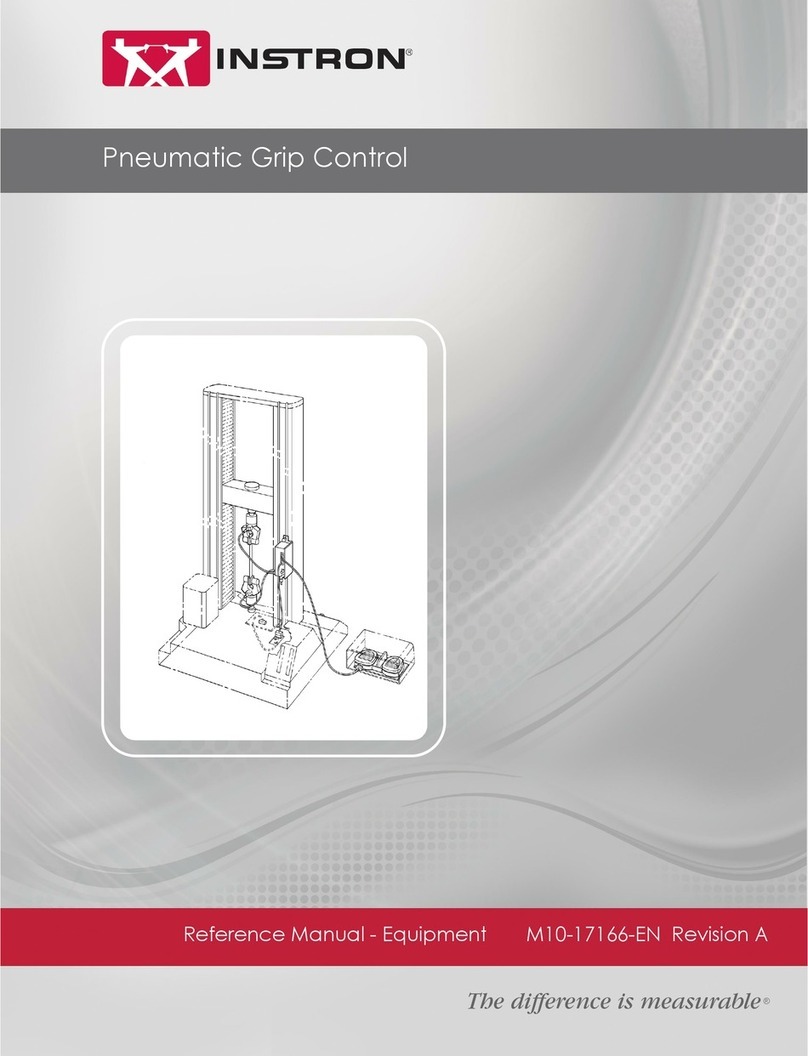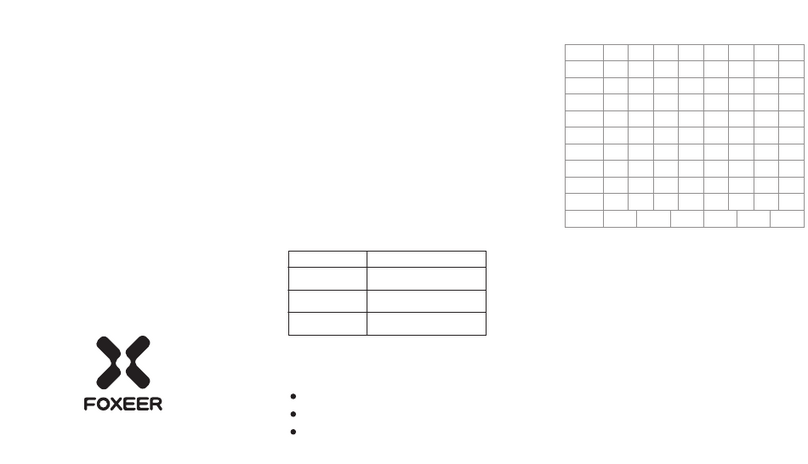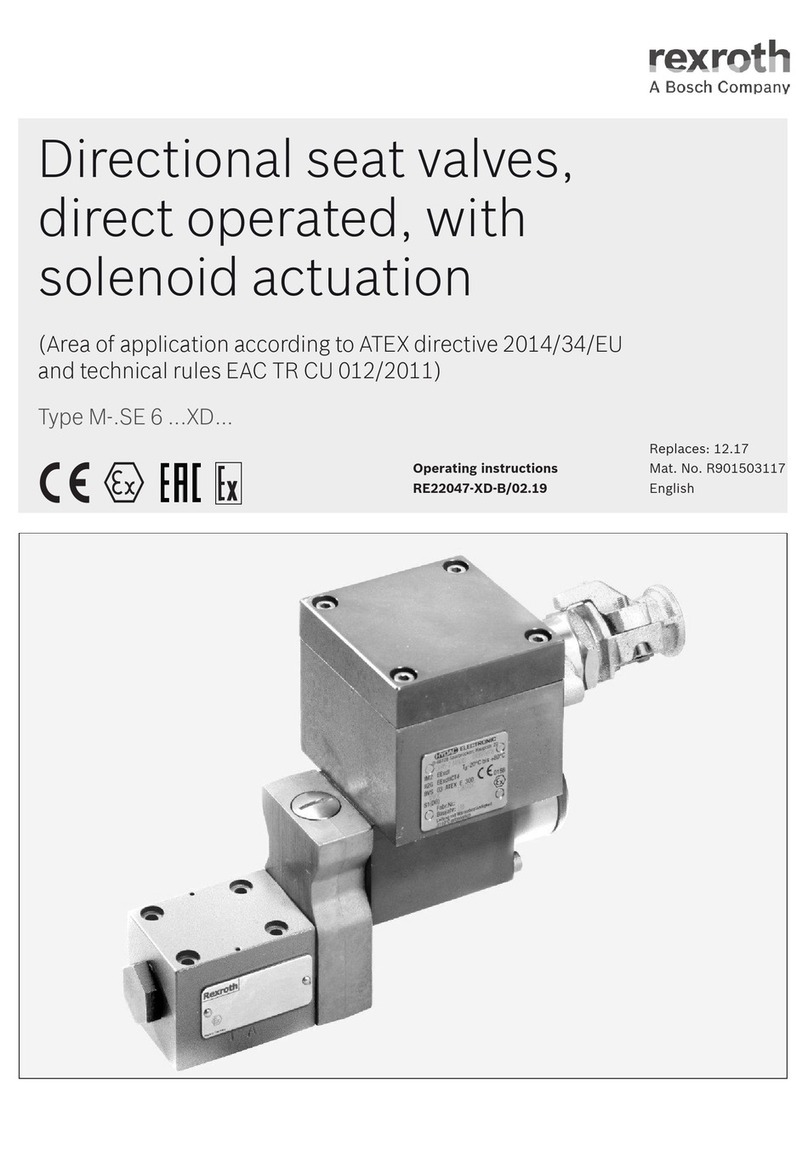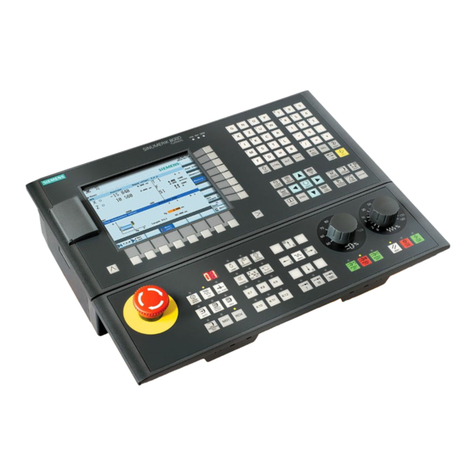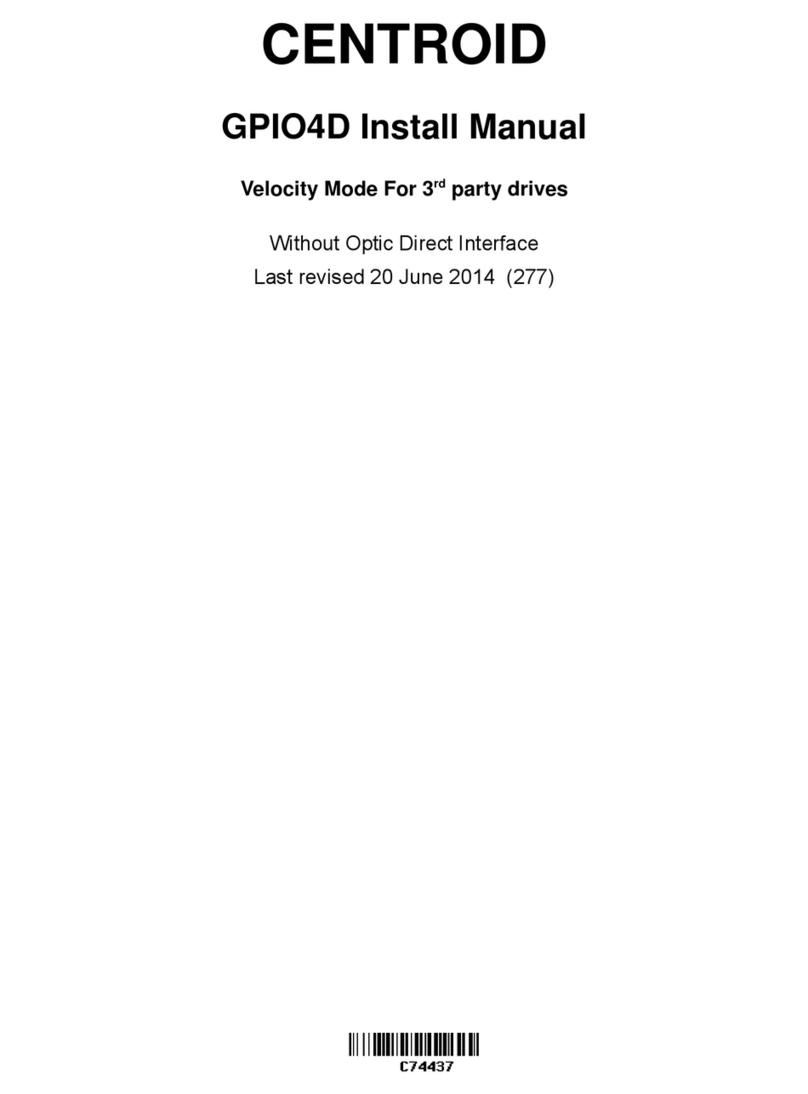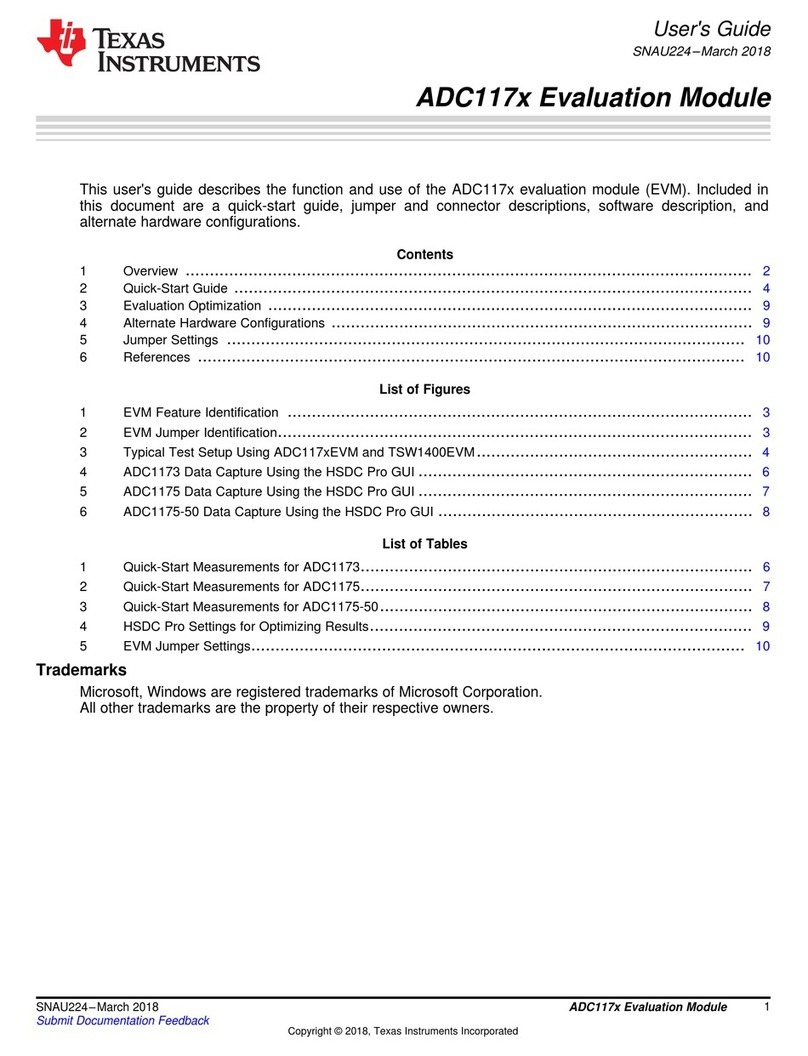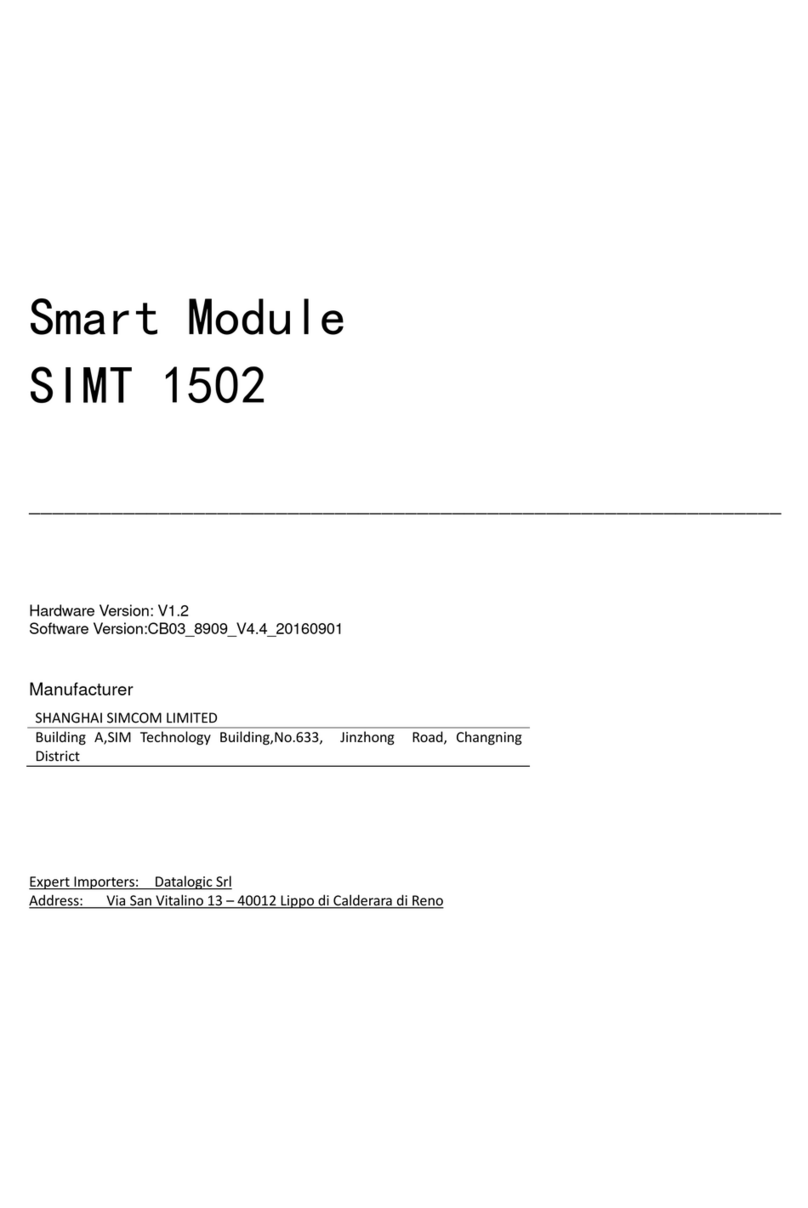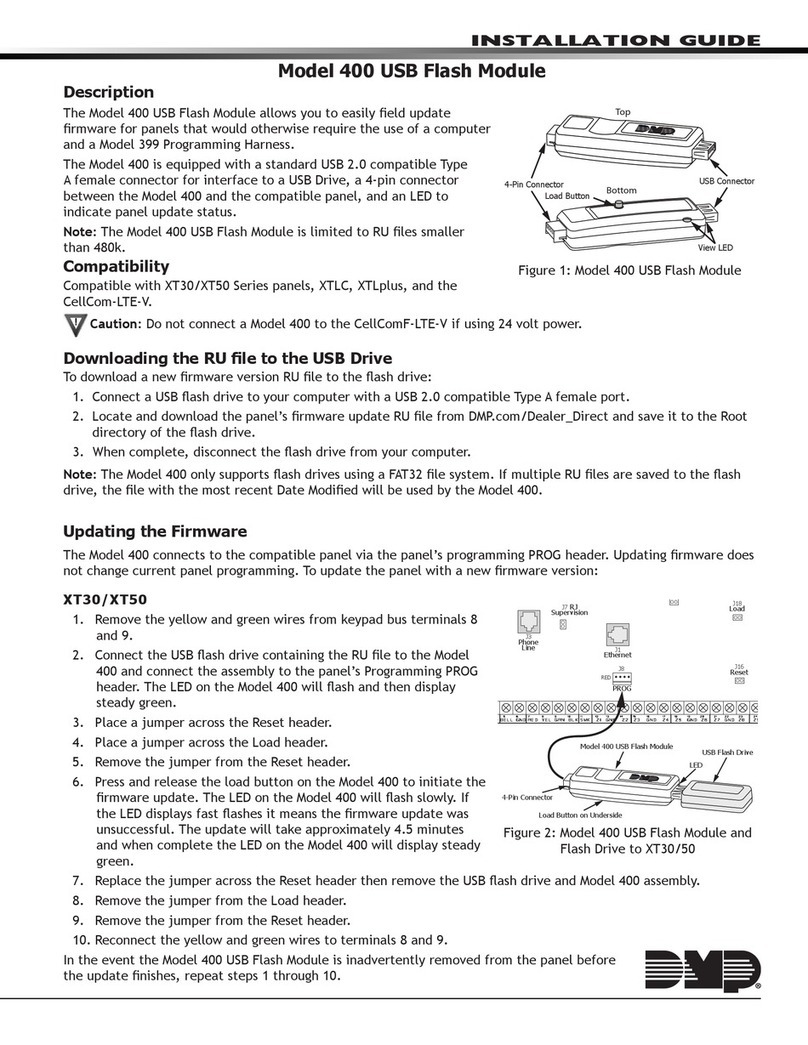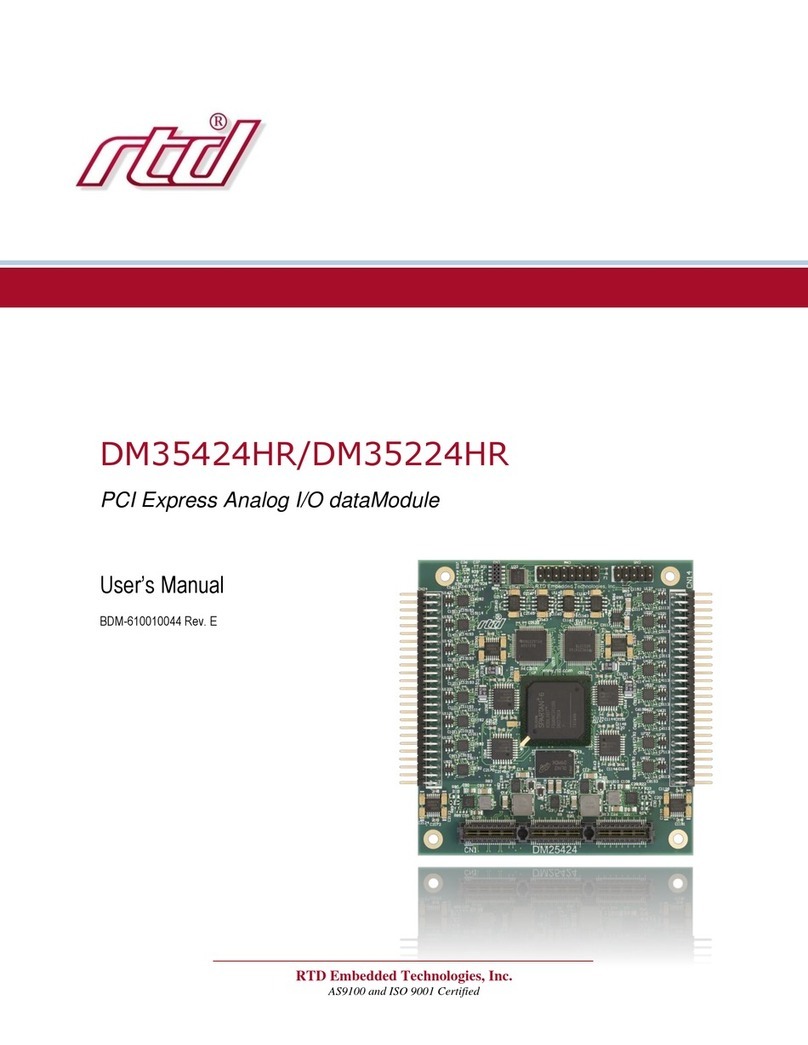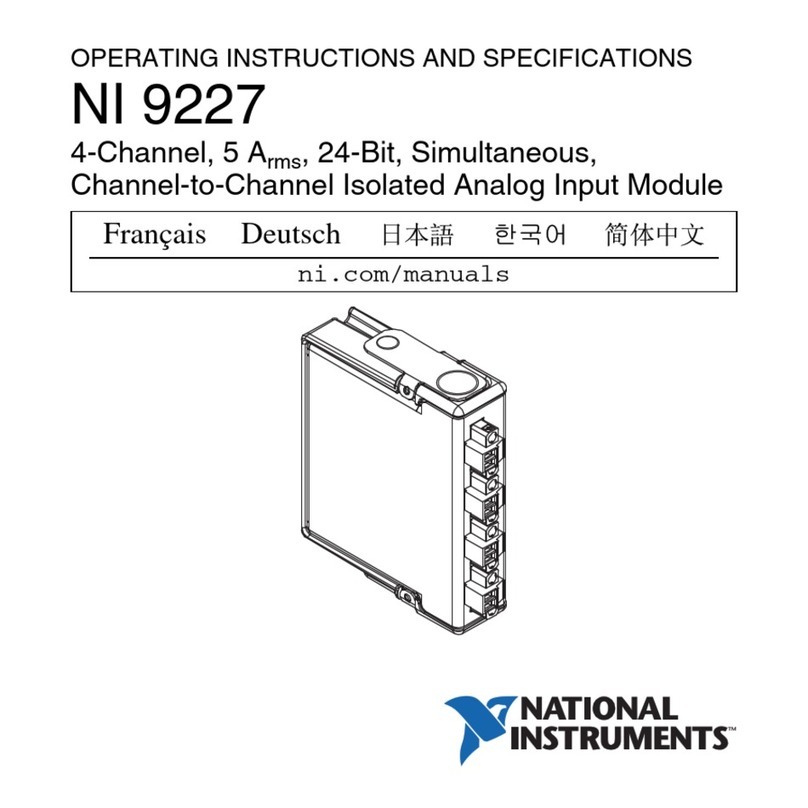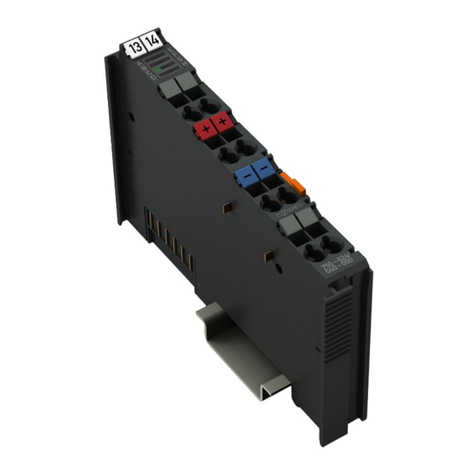Instron 2712 Series Manual

Series 2712 and 2732 Pneumatic Side Action Grips
Operator’s Guide M10-14179-EN Revision C
The difference is measurable
®

Electromagnetic Compatibility
Where applicable, this equipment is designed to comply with International Electromagnetic Com-
patibility (EMC) standards.
To ensure reproduction of this EMC performance, connect this equipment to a low impedance
ground connection. Typical suitable connections are a ground spike or the steel frame of a building.
Proprietary Rights Notice
This document and the information that it contains are the property of Illinois Tool Works Inc.
(ITW). Rights to duplicate or otherwise copy this document and rights to disclose the document and
the information that it contains to others and the right to use the information contained therein may
be acquired only by written permission signed by a duly authorized officer of ITW.
Trademarks
Instron®is a registered trademark of Illinois Tool Works Inc. (ITW). Other names, logos, icons and
marks identifying Instron products and services referenced herein are trademarks of ITW and may
not be used without the prior written permission of ITW.
Other product and company names listed are trademarks or trade names of their respective
companies.
Original Instructions
Copyright © 2015 Illinois Tool Works Inc. All rights reserved. All of the specifications
shown in this document are subject to change without notice.
Worldwide Headquarters
Instron
825 University Avenue
Norwood, MA 02062-2643
United States of America
European Headquarters
Instron
Coronation Road
High Wycombe, Bucks HP12 3SY
United Kingdom
Industrial Products Group
Instron
900 Liberty Street
Grove City, PA 16127
United States of America

iii
Preliminary Pages
General Safety Precautions
Materials testing systems are potentially hazardous.
Materials testing involves inherent hazards from high forces, rapid motions, and
stored energy. You must be aware of all moving and operating components that are
potentially hazardous, particularly the actuator in a servohydraulic testing system or
the moving crosshead in an electromechanical testing system.
Carefully read all relevant manuals and observe all Warnings and Cautions. The
term Warning is used where a hazard may lead to injury or death. The term Caution
is used where a hazard may lead to damage to equipment or to loss of data.
Instron products, to the best of its knowledge, comply with various national and
international safety standards, in as much as they apply to materials and structural
testing. We certify that our products comply with all relevant EU directives (CE
mark).
Because of the wide range of applications with which our instruments are used, and
over which we have no control, additional protection devices and operating
procedures may be necessary due to specific accident prevention regulations, safety
regulations, further EEA directives or locally valid regulations. The extent of our
delivery regarding protective devices is defined in your initial sales quotation. We
are thus free of liability in this respect.
At your request, we will gladly provide advice and quotations for additional safety
devices such as protective shielding, warning signs or methods of restricting access
to the equipment.
The following pages detail various general warnings that you must heed at all times
while using materials testing equipment. You will find more specific Warnings and
Cautions in the text whenever a potential hazard exists.
Your best safety precautions are to gain a thorough understanding of the equipment
by reading your instruction manuals and to always use good judgement.
It is our strong recommendation that you should carry out your own product safety
risk assessment.

Preliminary Pages M10-14179-EN
iv
Warnings
Hazard - Press the Emergency Stop button whenever you consider that an
unsafe condition exists.
The Emergency Stop button removes hydraulic power or electrical drive from the
testing system and brings the hazardous elements of the system to a stop as quickly
as possible. It does not isolate the system from electrical power, other means are
provided to disconnect the electrical supply. Whenever you consider that safety may
be compromised, stop the test using the Emergency Stop button. Investigate and
resolve the situation that caused the use of the Emergency Stop button before you
reset it.
Flying Debris Hazard - Make sure that test specimens are installed correctly
in grips or fixtures in order to eliminate stresses that can cause breakage of
grip jaws or fixture components.
Incorrect installation of test specimens creates stresses in grip jaws or fixture
components that can result in breakage of these components. The high energies
involved can cause the broken parts to be projected forcefully some distance from
the test area. Install specimens in the center of the grip jaws in line with the load
path. Insert specimens into the jaws by at least the amount recommended in your
grip documentation. This amount can vary between 66% to 100% insertion depth;
refer to supplied instructions for your specific grips. Use any centering and
alignment devices provided.
Hazard - Protect electrical cables from damage and inadvertent
disconnection.
The loss of controlling and feedback signals that can result from a disconnected or
damaged cable causes an open loop condition that may drive the actuator or
crosshead rapidly to its extremes of motion. Protect all electrical cables, particularly
transducer cables, from damage. Never route cables across the floor without
protection, nor suspend cables overhead under excessive strain. Use padding to
avoid chafing where cables are routed around corners or through wall openings.

v
Preliminary Pages
High/Low Temperature Hazard - Wear protective clothing when handling
equipment at extremes of temperature.
Materials testing is often carried out at non-ambient temperatures using ovens,
furnaces or cryogenic chambers. Extreme temperature means an operating
temperature exceeding 60 °C (140 °F) or below 0 °C (32 °F). You must use
protective clothing, such as gloves, when handling equipment at these temperatures.
Display a warning notice concerning low or high temperature operation whenever
temperature control equipment is in use. You should note that the hazard from
extreme temperature can extend beyond the immediate area of the test.
Crush Hazard - Take care when installing or removing a specimen, assembly,
structure, or load string component.
Installation or removal of a specimen, assembly, structure, or load string component
involves working inside the hazard area between the grips or fixtures. When
working in this area, ensure that other personnel cannot operate any of the system
controls. Keep clear of the jaws of a grip or fixture at all times. Keep clear of the
hazard area between the grips or fixtures during actuator or crosshead movement.
Ensure that all actuator or crosshead movements necessary for installation or
removal are slow and, where possible, at a low force setting.
Hazard - Do not place a testing system off-line from computer control without
first ensuring that no actuator or crosshead movement will occur upon
transfer to manual control.
The actuator or crosshead will immediately respond to manual control settings
when the system is placed off-line from computer control. Before transferring to
manual control, make sure that the control settings are such that unexpected
actuator or crosshead movement cannot occur.
Robotic Motion Hazard - Keep clear of the operating envelope of a robotic
device unless the device is de-activated.
The robot in an automated testing system presents a hazard because its movements
are hard to predict. The robot can go instantly from a waiting state to high speed
operation in several axes of motion. During system operation, keep away from the
operating envelope of the robot. De-activate the robot before entering the envelope
for any purpose, such as reloading the specimen magazine.
Warnings

Preliminary Pages M10-14179-EN
vi
Hazard - Set the appropriate limits before performing loop tuning or running
waveforms or tests.
Operational limits are included within your testing system to suspend motion or
shut off the system when upper and/or lower bounds of actuator or crosshead travel,
or force or strain, are reached during testing. Correct setting of operational limits
by the operator, prior to testing, will reduce the risk of damage to test article and
system and associated hazard to the operator.
Electrical Hazard - Disconnect the electrical power supply before removing
the covers to electrical equipment.
Disconnect equipment from the electrical power supply before removing any
electrical safety covers or replacing fuses. Do not reconnect the power source while
the covers are removed. Refit covers as soon as possible.
Rotating Machinery Hazard - Disconnect power supplies before removing the
covers to rotating machinery.
Disconnect equipment from all power supplies before removing any cover which
gives access to rotating machinery. Do not reconnect any power supply while the
covers are removed unless you are specifically instructed to do so in the manual. If
the equipment needs to be operated to perform maintenance tasks with the covers
removed, ensure that all loose clothing, long hair, etc. is tied back. Refit covers as
soon as possible.
Hazard - Shut down the hydraulic power supply and discharge hydraulic
pressure before disconnection of any hydraulic fluid coupling.
Do not disconnect any hydraulic coupling without first shutting down the hydraulic
power supply and discharging stored pressure to zero. Tie down or otherwise secure
all pressurized hoses to prevent movement during system operation and to prevent
the hose from whipping about in the event of a rupture.
Hazard - Shut off the supply of compressed gas and discharge residual gas
pressure before you disconnect any compressed gas coupling.
Do not release gas connections without first disconnecting the gas supply and
discharging any residual pressure to zero.
Warnings

vii
Preliminary Pages
Explosion Hazard - Wear eye protection and use protective shields or screens
whenever any possibility exists of a hazard from the failure of a specimen,
assembly or structure under test.
Wear eye protection and use protective shields or screens whenever a risk of injury
to operators and observers exists from the failure of a test specimen, assembly or
structure, particularly where explosive disintegration may occur. Due to the wide
range of specimen materials, assemblies or structures that may be tested, any hazard
resulting from the failure of a test specimen, assembly or structure is entirely the
responsibility of the owner and the user of the equipment.
Hazard - Ensure components of the load string are correctly pre-loaded to
minimize the risk of fatigue failure.
Dynamic systems, especially where load reversals through zero are occurring, are at
risk of fatigue cracks developing if components of the load string are not correctly
pre-loaded to one another. Apply the specified torque to all load string fasteners and
the correct setting to wedge washers or spiral washers. Visually inspect highly
stressed components such as grips and threaded adapters prior to every fatigue test
for signs of wear or fatigue damage.
Warnings

Preliminary Pages M10-14179-EN
viii

ix
Preliminary Pages
Table of Contents
Chapter 1 Introduction . . . . . . . . . . . . . . . . . . . . . . . . . . . . . . . . . . . . . . . . . . . . . . . 1-1
Purpose. . . . . . . . . . . . . . . . . . . . . . . . . . . . . . . . . . . . . . . . . . . . . . . . . . . . . . . . 1-2
Description . . . . . . . . . . . . . . . . . . . . . . . . . . . . . . . . . . . . . . . . . . . . . . . . . . . . . 1-4
Function . . . . . . . . . . . . . . . . . . . . . . . . . . . . . . . . . . . . . . . . . . . . . . . . . . . . . . . 1-6
Closing the Grip. . . . . . . . . . . . . . . . . . . . . . . . . . . . . . . . . . . . . . . . . . . . . . . 1-6
Opening the Grip. . . . . . . . . . . . . . . . . . . . . . . . . . . . . . . . . . . . . . . . . . . . . . 1-6
Accessories. . . . . . . . . . . . . . . . . . . . . . . . . . . . . . . . . . . . . . . . . . . . . . . . . . . . . 1-7
Foot Switch . . . . . . . . . . . . . . . . . . . . . . . . . . . . . . . . . . . . . . . . . . . . . . . . . . 1-7
Automatic Grip Controller . . . . . . . . . . . . . . . . . . . . . . . . . . . . . . . . . . . . . . . 1-8
Chapter 2 Specifications . . . . . . . . . . . . . . . . . . . . . . . . . . . . . . . . . . . . . . . . . . . . . 2-1
2712-001 and 2712-013 . . . . . . . . . . . . . . . . . . . . . . . . . . . . . . . . . . . . . . . . . . . 2-2
Specifications . . . . . . . . . . . . . . . . . . . . . . . . . . . . . . . . . . . . . . . . . . . . . . . . 2-2
Dimensions . . . . . . . . . . . . . . . . . . . . . . . . . . . . . . . . . . . . . . . . . . . . . . . . . . 2-2
2712-002 and 2712-019 . . . . . . . . . . . . . . . . . . . . . . . . . . . . . . . . . . . . . . . . . . . 2-4
Specifications . . . . . . . . . . . . . . . . . . . . . . . . . . . . . . . . . . . . . . . . . . . . . . . . 2-4
Dimensions . . . . . . . . . . . . . . . . . . . . . . . . . . . . . . . . . . . . . . . . . . . . . . . . . . 2-4
2712-003, 2712-004 and 2712-018, 2712-020 . . . . . . . . . . . . . . . . . . . . . . . . . . 2-6
Specifications . . . . . . . . . . . . . . . . . . . . . . . . . . . . . . . . . . . . . . . . . . . . . . . . 2-6
Dimensions . . . . . . . . . . . . . . . . . . . . . . . . . . . . . . . . . . . . . . . . . . . . . . . . . . 2-7
2712-016. . . . . . . . . . . . . . . . . . . . . . . . . . . . . . . . . . . . . . . . . . . . . . . . . . . . . . . 2-9
Specifications . . . . . . . . . . . . . . . . . . . . . . . . . . . . . . . . . . . . . . . . . . . . . . . . 2-9
Dimensions . . . . . . . . . . . . . . . . . . . . . . . . . . . . . . . . . . . . . . . . . . . . . . . . . . 2-9
2732-003, 2732-004, 2732-008 and 2732-009 . . . . . . . . . . . . . . . . . . . . . . . . . 2-11
Specifications . . . . . . . . . . . . . . . . . . . . . . . . . . . . . . . . . . . . . . . . . . . . . . . 2-11
Dimensions . . . . . . . . . . . . . . . . . . . . . . . . . . . . . . . . . . . . . . . . . . . . . . . . . 2-11
2732-006. . . . . . . . . . . . . . . . . . . . . . . . . . . . . . . . . . . . . . . . . . . . . . . . . . . . . . 2-13
Specifications . . . . . . . . . . . . . . . . . . . . . . . . . . . . . . . . . . . . . . . . . . . . . . . 2-13
Dimensions . . . . . . . . . . . . . . . . . . . . . . . . . . . . . . . . . . . . . . . . . . . . . . . . . 2-13
Compatible Jaw faces. . . . . . . . . . . . . . . . . . . . . . . . . . . . . . . . . . . . . . . . . . . . 2-15

Preliminary Pages M10-14179-EN
x
Chapter 3 Installation . . . . . . . . . . . . . . . . . . . . . . . . . . . . . . . . . . . . . . . . . . . . . . . . 3-1
Installing to a Load Frame. . . . . . . . . . . . . . . . . . . . . . . . . . . . . . . . . . . . . . . . . . 3-2
Clevis Pin Couplings . . . . . . . . . . . . . . . . . . . . . . . . . . . . . . . . . . . . . . . . . . . 3-2
Swivel Coupling. . . . . . . . . . . . . . . . . . . . . . . . . . . . . . . . . . . . . . . . . . . . . . . 3-3
Threaded Couplings . . . . . . . . . . . . . . . . . . . . . . . . . . . . . . . . . . . . . . . . . . . 3-3
High Temperature Extension Rods . . . . . . . . . . . . . . . . . . . . . . . . . . . . . . . . 3-4
Installing and Removing Jaw Faces . . . . . . . . . . . . . . . . . . . . . . . . . . . . . . . . . . 3-6
Equipment. . . . . . . . . . . . . . . . . . . . . . . . . . . . . . . . . . . . . . . . . . . . . . . . . . . 3-6
Installing Jaw faces. . . . . . . . . . . . . . . . . . . . . . . . . . . . . . . . . . . . . . . . . . . . 3-6
Removing Jaw faces. . . . . . . . . . . . . . . . . . . . . . . . . . . . . . . . . . . . . . . . . . . 3-7
Installing Jaw Face Shields. . . . . . . . . . . . . . . . . . . . . . . . . . . . . . . . . . . . . . . . . 3-8
Connecting Pneumatics . . . . . . . . . . . . . . . . . . . . . . . . . . . . . . . . . . . . . . . . . . . 3-9
Grip Nozzle . . . . . . . . . . . . . . . . . . . . . . . . . . . . . . . . . . . . . . . . . . . . . . . . . . 3-9
Manual Foot Switch. . . . . . . . . . . . . . . . . . . . . . . . . . . . . . . . . . . . . . . . . . . 3-10
Automatic Grip Control Unit. . . . . . . . . . . . . . . . . . . . . . . . . . . . . . . . . . . . . 3-12
Chapter 4 Operation . . . . . . . . . . . . . . . . . . . . . . . . . . . . . . . . . . . . . . . . . . . . . . . . . 4-1
Preparing for Use . . . . . . . . . . . . . . . . . . . . . . . . . . . . . . . . . . . . . . . . . . . . . . . . 4-2
General Considerations. . . . . . . . . . . . . . . . . . . . . . . . . . . . . . . . . . . . . . . . . 4-2
Extreme Temperature Considerations. . . . . . . . . . . . . . . . . . . . . . . . . . . . . . 4-2
Opening and Closing the Grips. . . . . . . . . . . . . . . . . . . . . . . . . . . . . . . . . . . . . . 4-3
Toggle Valve . . . . . . . . . . . . . . . . . . . . . . . . . . . . . . . . . . . . . . . . . . . . . . . . . 4-3
Foot Switch . . . . . . . . . . . . . . . . . . . . . . . . . . . . . . . . . . . . . . . . . . . . . . . . . . 4-3
Automatic Grip Controller . . . . . . . . . . . . . . . . . . . . . . . . . . . . . . . . . . . . . . . 4-3
Installing a Specimen . . . . . . . . . . . . . . . . . . . . . . . . . . . . . . . . . . . . . . . . . . . . . 4-4
Checklist . . . . . . . . . . . . . . . . . . . . . . . . . . . . . . . . . . . . . . . . . . . . . . . . . . . . 4-4
Procedure . . . . . . . . . . . . . . . . . . . . . . . . . . . . . . . . . . . . . . . . . . . . . . . . . . . 4-5
Removing a Specimen . . . . . . . . . . . . . . . . . . . . . . . . . . . . . . . . . . . . . . . . . . . . 4-6
Checklist . . . . . . . . . . . . . . . . . . . . . . . . . . . . . . . . . . . . . . . . . . . . . . . . . . . . 4-6
Procedure . . . . . . . . . . . . . . . . . . . . . . . . . . . . . . . . . . . . . . . . . . . . . . . . . . . 4-6
Chapter 5 Maintenance. . . . . . . . . . . . . . . . . . . . . . . . . . . . . . . . . . . . . . . . . . . . . . . 5-1
Checklist . . . . . . . . . . . . . . . . . . . . . . . . . . . . . . . . . . . . . . . . . . . . . . . . . . . . . . . 5-2

xi
Preliminary Pages
Lubrication. . . . . . . . . . . . . . . . . . . . . . . . . . . . . . . . . . . . . . . . . . . . . . . . . . . . . . 5-3
Series 2712. . . . . . . . . . . . . . . . . . . . . . . . . . . . . . . . . . . . . . . . . . . . . . . . . . 5-3
Series 2732 (High Temperature). . . . . . . . . . . . . . . . . . . . . . . . . . . . . . . . . . 5-4
Servicing . . . . . . . . . . . . . . . . . . . . . . . . . . . . . . . . . . . . . . . . . . . . . . . . . . . . . . . 5-5
Troubleshooting. . . . . . . . . . . . . . . . . . . . . . . . . . . . . . . . . . . . . . . . . . . . . . . . . . 5-6
Chapter 6 Illustrated Parts . . . . . . . . . . . . . . . . . . . . . . . . . . . . . . . . . . . . . . . . . . . . 6-1
Finding a Part . . . . . . . . . . . . . . . . . . . . . . . . . . . . . . . . . . . . . . . . . . . . . . . . . . . 6-2
2712-001 and 2712-013 . . . . . . . . . . . . . . . . . . . . . . . . . . . . . . . . . . . . . . . . . . . 6-3
2712-002 and 2712-019 . . . . . . . . . . . . . . . . . . . . . . . . . . . . . . . . . . . . . . . . . . . 6-6
2712-003 and 2712-004 . . . . . . . . . . . . . . . . . . . . . . . . . . . . . . . . . . . . . . . . . . 6-10
2712-018 and 2712-020 . . . . . . . . . . . . . . . . . . . . . . . . . . . . . . . . . . . . . . . . . . 6-13
2712-016. . . . . . . . . . . . . . . . . . . . . . . . . . . . . . . . . . . . . . . . . . . . . . . . . . . . . . 6-16
2732-003 and 2732-004 . . . . . . . . . . . . . . . . . . . . . . . . . . . . . . . . . . . . . . . . . . 6-19
2732-006. . . . . . . . . . . . . . . . . . . . . . . . . . . . . . . . . . . . . . . . . . . . . . . . . . . . . . 6-21
2732-008 and 2732-009 . . . . . . . . . . . . . . . . . . . . . . . . . . . . . . . . . . . . . . . . . . 6-23

Preliminary Pages M10-14179-EN
xii
Samples of 2712 and 2732 Grips
2712-001 2712-003
2732-003

1-1
Introduction
Chapter 1
Introduction
Outline
This chapter introduces the Series 2712 and 2732 pneumatic grips and details the
purpose, description and function of the grips. It includes the following sections:
•Purpose. . . . . . . . . . . . . . . . . . . . . . . . . . . . . . . . . . . . . . . . . . . . . . . . . . . . 1-2
•Description. . . . . . . . . . . . . . . . . . . . . . . . . . . . . . . . . . . . . . . . . . . . . . . . . 1-4
•Function . . . . . . . . . . . . . . . . . . . . . . . . . . . . . . . . . . . . . . . . . . . . . . . . . . . 1-6
•Accessories. . . . . . . . . . . . . . . . . . . . . . . . . . . . . . . . . . . . . . . . . . . . . . . . . 1-7

Purpose M10-14179-EN
1-2
Purpose
Instron Series 2712 and 2732 pneumatic action grips are designed for material
testing applications where specimens are difficult to hold in conventional screw-
action grips. Pneumatic action grips allow rapid, easy loading of specimens from
delicate films to polymers and woven fabrics. This provides a very simple and
efficient method for securing test specimens easily and quickly. The pneumatic
action of these grips let you accurately control the gripping force on the specimen
with a minimum but constant force.
The primary difference between the Series 2712 grips and the 2732 grips is that
the 2712 grips are used at ambient temperatures, whereas the 2732 grips are high
temperature grips and are designed for use inside a temperature chamber. The
individual grips within both Series differ in several ways:
•Capacity.
•Mechanical connections that secure the grip in the load string.
•Range of applications.
The capacity and mechanical connections for each grip are detailed in Chapter 2.
The range of applications for each grip is outlined in Table 1-1.
Figure 1-1 and Figure 1-2 display typical grips of both the Series 2712 and
Series 2732 grips.
Table 1-1. Range of Applications
Grip Number Specimen Materials Specimen Shapes
2712-001
2712-013 Thin sheets, films, foils, threads,
filaments and soft materials. Round (wires or mono filaments) and flat
specimen with or without shoulder tab ends.
2712-002
2712-003
2712-004
2712-016
2712-018
2712-019
2712-020
Thin sheets, films, foils, threads, plastic
tapes, fine wires and soft materials. Round (wires) and flat specimen with or
without shoulder tab ends.
2732-003
2732-004
2732-006
2732-008
2732-009
Thin sheets, films, foils, threads, plastic
tapes, fine wires and soft materials. Round (wires) and flat specimen with or
without shoulder tab ends.

1-3
Purpose
Introduction
Figure 1-1. Series 2712 Typical Grips
2712-001 2712-002
Upper grip
Specimen
Lower grip
Figure 1-2. Series 2732 Typical Grips

Description M10-14179-EN
1-4
Description
Both the Series 2712 and 2732 share a common design. The grip consists of a U-
shaped frame and a cylindrical piston housing. The housing encloses a conical
piston and compression spring. One piston end is cone-shaped and tapers toward
the grip’s open end. Two integral arms, each housing a transfer lever, roller link
and jaw face holder, extend away from the piston housing. The narrow taper of the
piston contacts the two roller links, and the roller links couple to the transfer
levers via dowel pins. Dowel pins couple the levers to the jaw face holders. A
dowel pin couples the rectangular jaw face to the holder.
The 2732 high temperature grips are designed to be inside an environmental
chamber. These grips have extension rods that provide maximum travel in a
chamber and also conduct air to the grips. Inside the frame cavity, a metal bellows
encloses the grip piston.
Models 2712-002 and 2712-019 have an integral toggle valve to open and close
the grips. All other grip models require a separate air control, such as a pneumatic
foot switch, to operate the grips.
Both jaw faces automatically adjust to different specimen thicknesses to ensure
that the line of tensile force remains concentric with the grip body. The grips
within both Series 2712 (except the 2712-001 and 2712-013 grips) and Series
2732 can be equipped with a variety of interchangeable jaw faces in various sizes
and surface types. Refer to Table 2-14 on page 2-15 to find compatible jaw faces
for your specific grip model. Contact your Instron sales representative for
assistance with selecting jaw faces that are suitable for your testing requirements.
Figure 1-3 on page 1-5 illustrates the basic grip components.

1-5
Description
Introduction
Figure 1-3. Basic Grip Components
Mechanical connection
Locknut
(2712-018,-019,-020 only)
Piston housing
Frame
Jaw faces
Upper
Grip
Lower
Grip

Function M10-14179-EN
1-6
Function
All Instron pneumatic grips operate on the same mechanical principle. Pneumatic
action grips clamp the specimen through a dual lever arm, actuated by air
cylinders built into the grip body. The gripping force can be increased with air
pressure to accommodate materials that are often difficult to hold. This constant
gripping force is maintained on the specimen, and provides follow-up action to
compensate for any decay in the gripping force.
The interchangeable jaw faces are mounted so that one face is free to swivel on a
horizontal axis and the other on a vertical axis. This action allows for self
alignment to compensate for variations in specimen thickness.
The following subsections are general functional descriptions of the grip
components.
Closing the Grip
Applying air pressure to the grip creates a pressure differential on the piston
causing it to move in toward the specimen. The force of the piston cone against
the roller link actuates the transfer levers inward, pushing the jaw face holders
toward the specimen.
The pressure inside the grip increases as the jaw faces contact the specimen.
Gripping force on the specimen is directly proportional to the air pressure applied
to the grip; if pressure increases, gripping force increases. There must be constant
air pressure to the grip to maintain a gripping force on a specimen.
Coupling pins allow one jaw face to swivel on the horizontal axis and the other on
the vertical axis. This swivel action compensates for small variations in load
string alignment and specimen thickness.
The jaw face contact surface affects the grip's hold on the specimen. Jaw faces
with serrations penetrate the specimen, smooth faces do not penetrate the
specimen and rubber faces have a high coefficient of friction without penetrating
the specimen.
Opening the Grip
When you remove the air supply from the grip, there is no longer a pressure
differential on the piston. With no pressure differential, the return spring retracts
the piston from the roller links. The compression spring in each arm retracts the
transfer lever which pulls the jaw face away from the specimen.

1-7
Accessories
Introduction
Accessories
A pneumatic foot switch or an automatic grip controller are optional accessories
for opening and closing the grips.
Foot Switch
The pneumatic foot switch is a switch assembly and three air lines. Figure 1-4
illustrates the foot switch. Two hoses from the air outlet lines, marked upper grip
and lower grip, have quick disconnect fittings that attach to the corresponding
grips. The third air line has a female threaded fitting on both ends which connects
the foot switch and the air supply.
The design of the pneumatic foot switch lets you open and close the grips while
leaving your hands free for installing and aligning the specimen in the grips. You
can operate the pneumatic grips with an in-house air supply or a small self-
contained compressor.
Figure 1-4. Foot Switch
Output to upper grip
Output to lower grip
Air supply input
Foot switch

Accessories M10-14179-EN
1-8
Automatic Grip Controller
You can operate the grips with an optional automatic grip controller. Controllers
are available for Instron electromechanical systems.
A grip control unit, foot switch and interconnecting cables comprise the grip
controller. The grip control unit is a small rectangular enclosure which mounts to
the outside of a load frame column. The unit contains solenoid valves and a small
printed circuit board. On the outside of the unit there are three pneumatic
connections and a load frame interface connector.
For more detail on the automatic grip controllers, refer to the appropriate grip
controller manuals.
Other manuals for 2712 Series
1
This manual suits for next models
1
Table of contents
Other Instron Control Unit manuals
Popular Control Unit manuals by other brands
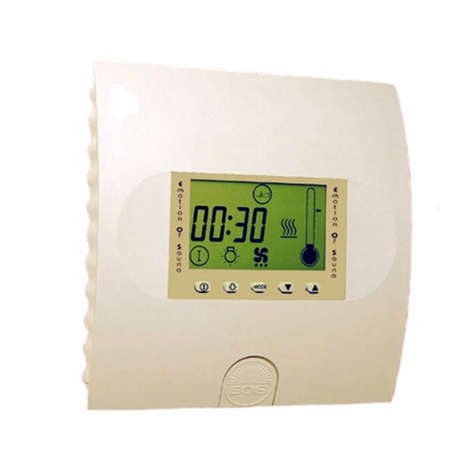
EOS
EOS EMOTEC DC 9000 user guide
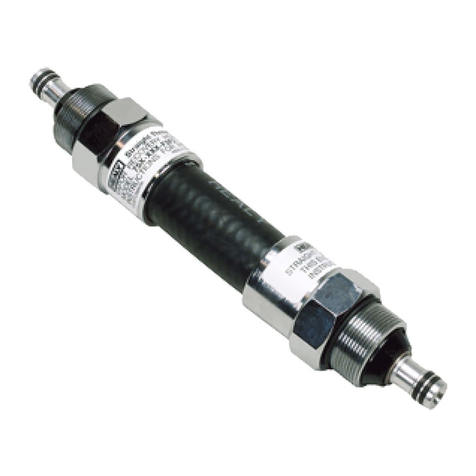
Franklin Fueling Systems
Franklin Fueling Systems Healy 8701VV manual
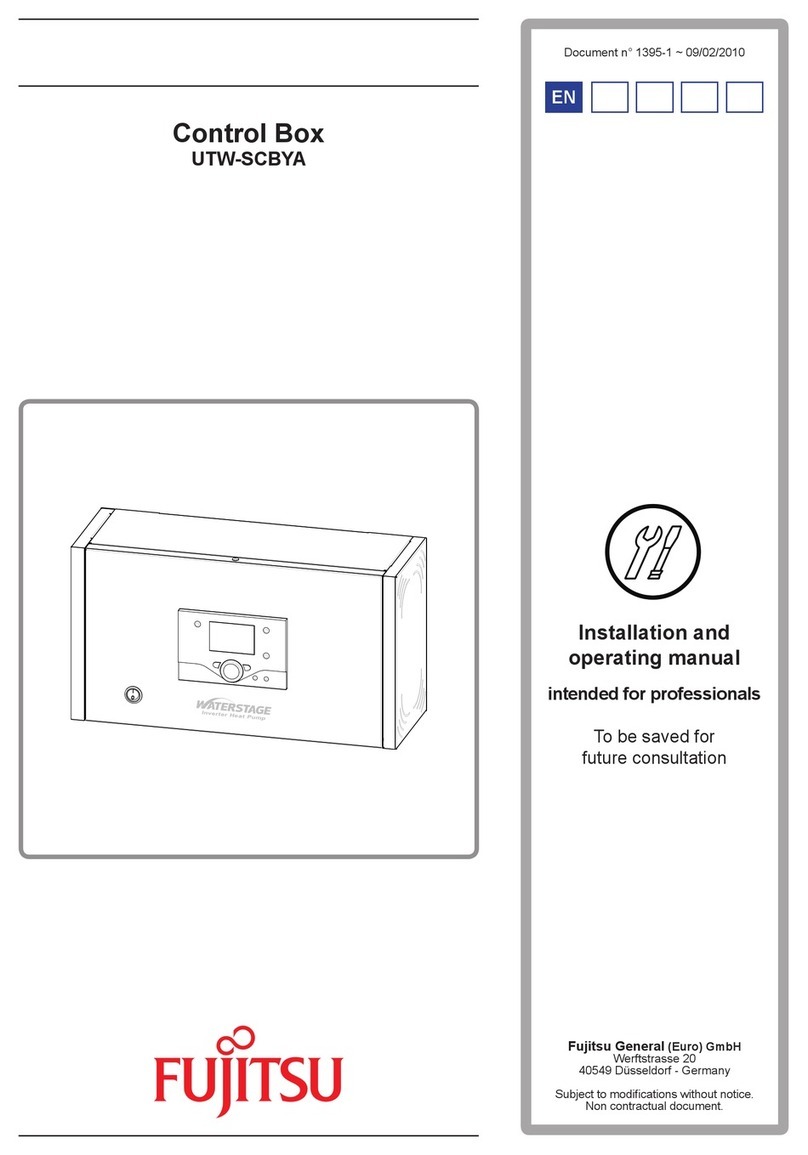
Fujitsu
Fujitsu UTW-SCBYA Installation and operating manual
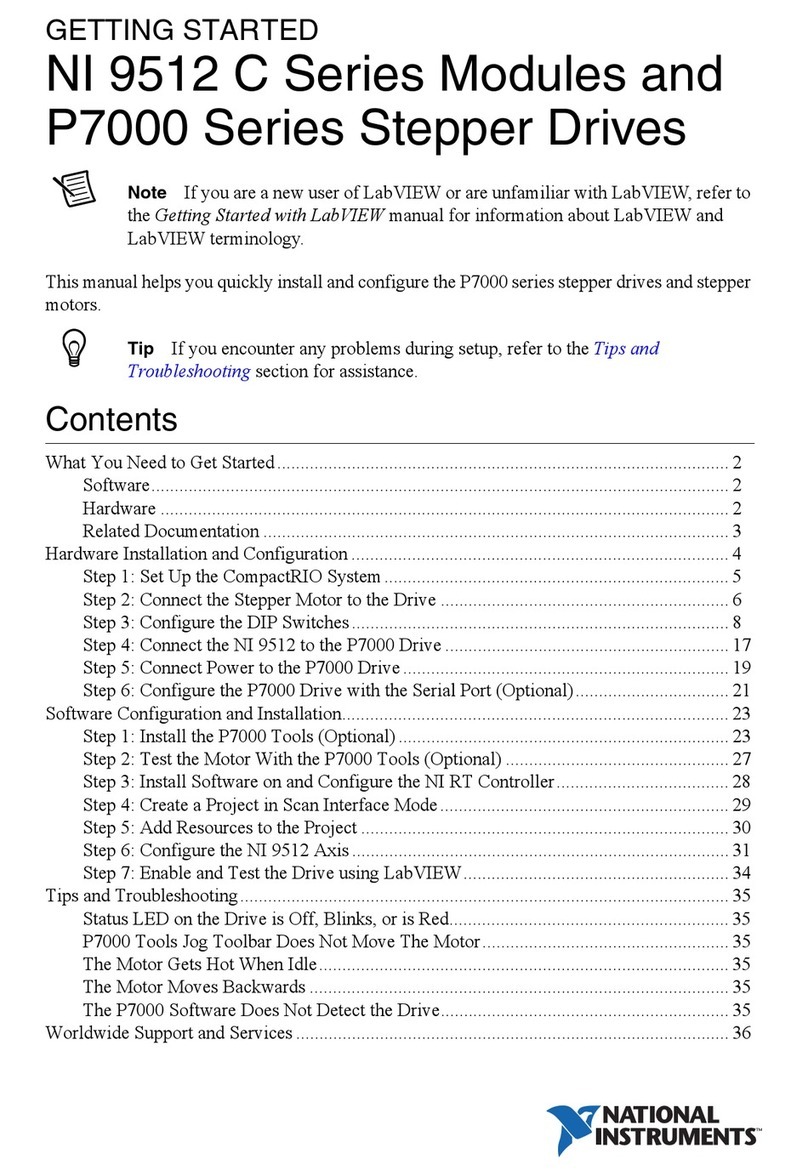
National Instruments
National Instruments 9512 C Series Getting started
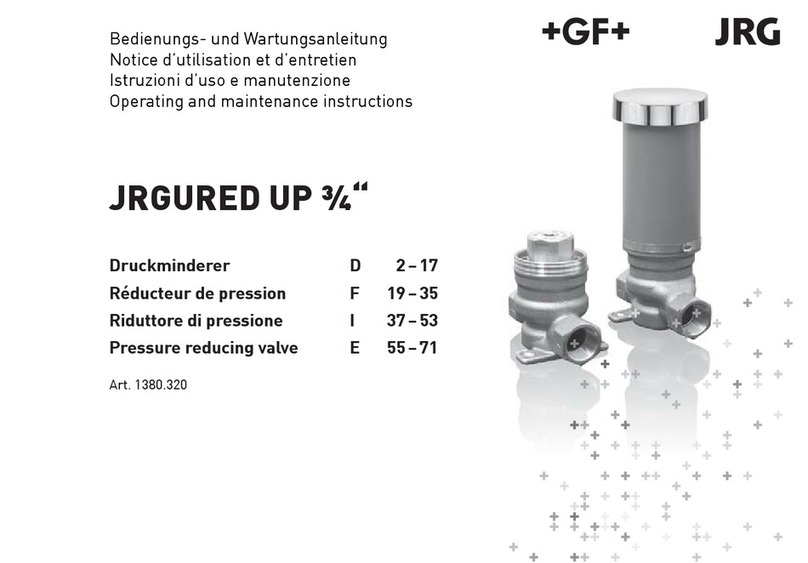
GF
GF JRGURED UP Operating and maintenance instructions

VAT
VAT 010 Series Installation, operating, & maintenance instructions
